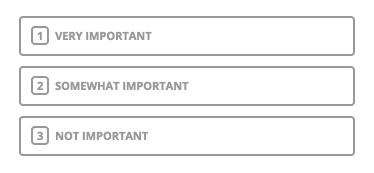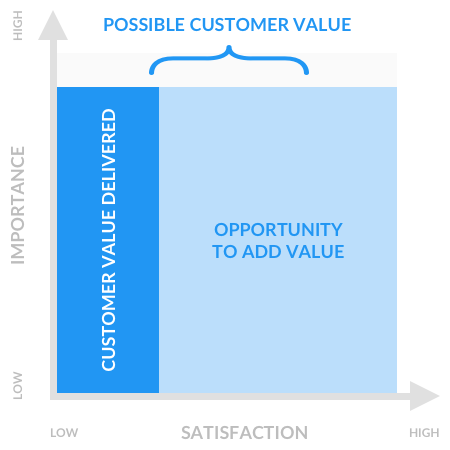Learning from your user feedback
Make more informed decisions by knowing what matters most to your users.
When you go to your dashboard at https://app.hellosift.com you'll see a list of all the feedback you've asked of your users.
As a hypothetical example, we could ask you for feedback about a never-ending problem for product teams – prioritizing your features:

Let's break this example down.
Happiness
When you ask how happy customers are with your feature (or with how they solve a problem, or how much they like an idea), they'll have three choices:
- Happy
- Neutral
- Unhappy

In our example above, only some users said they are happy with how they currently solve the problem of Prioritizing your features. If we were asking this question to anonymous users visiting our landing page, this would be critical information for our product team.
Three answers may seem limiting, but research psychologists have found that too many options can be confusing. This is only amplified when you prompt for feedback inside your product: you don't want to overwhelm your user but you do want the feedback.
Importance
When you ask your customers how important your feature (or problem, or idea) is to them, they'll also have three possible answers to choose from:
- Very important
- Somewhat important
- Not important

In our example above, all our users said the problem of Prioritizing your features is very important to them. Good to know.
Opportunity 🚀
The opportunity score you see in our example is calculated for you. By opportunity we mean opportunity to add customer value, which can be represented in this formula:
Opportunity = Possible Customer Value – Customer Value Delivered
Or if you're a visual learner like me:

Your opportunity score is most important to consider in relation to other features. Your team should focus on features with the largest untapped opportunity first. To read more about this, you can read our in-depth post about prioritizing your features by customer need.
Updated over 7 years ago
